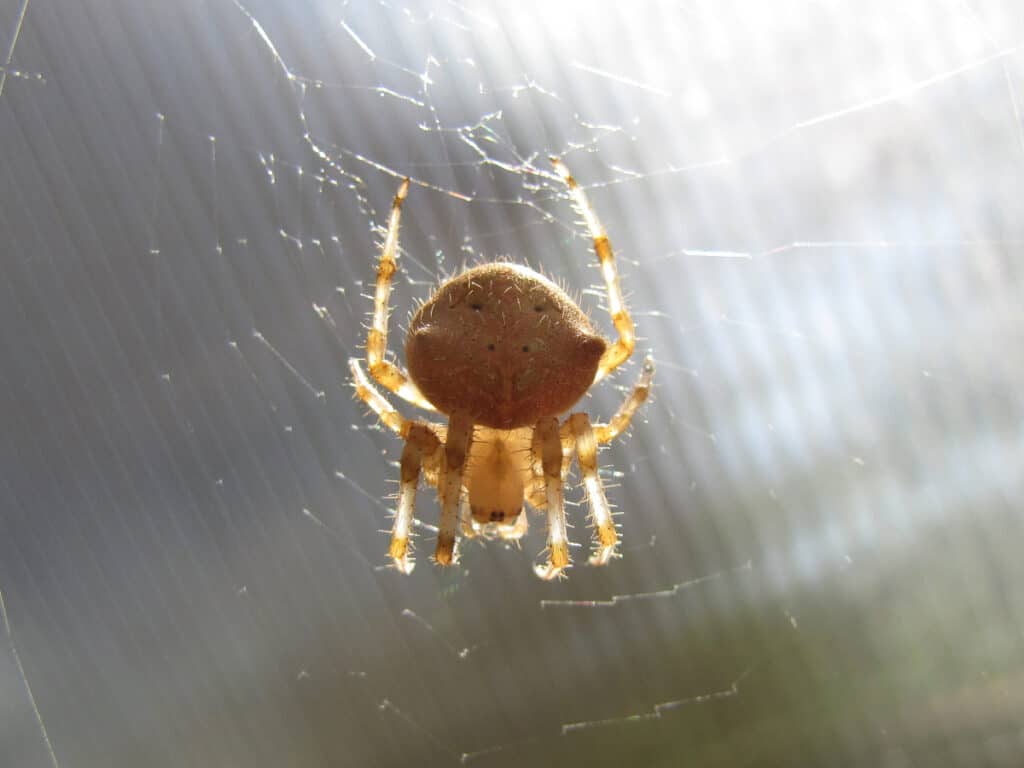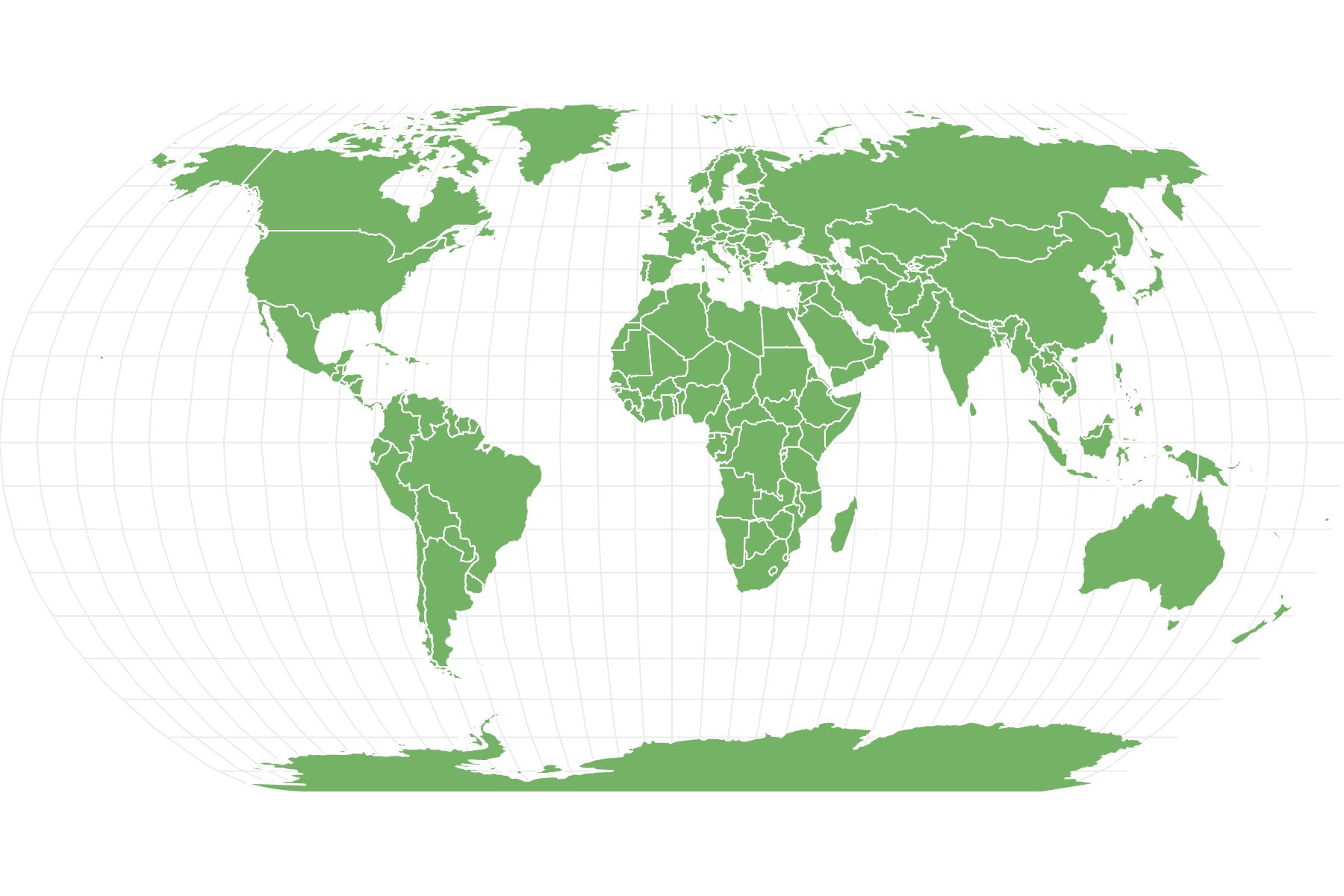Cat-Faced Spider
Araneus gemmoides
Female cat-faced spiders die off shortly after laying their egg.
Advertisement
Cat-Faced Spider Facts
- Prey
- Insect and smaller spiders
- Main Prey
- Insects
- Name Of Young
- Spiderlings
- Group Behavior
- Solitary
- Fun Fact
- Female cat-faced spiders die off shortly after laying their egg.
- Biggest Threat
- Bigger spiders
- Most Distinctive Feature
- Two horn-like bumps on the top of their body that look like cat ears
- Distinctive Feature
- Cat faced spiders have two dimpled patterns on their round abdomen that look like cat eyes.
- Other Name(s)
- Jewel spider
- Average Spawn Size
- 100
- Habitat
- Gardens and other outdoor spaces
- Predators
- Bigger insects and spiders
- Diet
- Insectivore
- Lifestyle
- Solitary
- Type
- Spider
- Common Name
- Cat-faced spider
- Special Features
- Spiderlings of cat faced spiders spread to other locations by balooning
- Origin
- North America
- Location
- Canada and the United States
Cat-Faced Spider Physical Characteristics
- Color
- Brown
- Dark Brown
- Grey-Brown
- Lifespan
- 1 year
- Length
- 0.19 –1.0 inches
- Venomous
- Yes
- Aggression
- Low
View all of the Cat-Faced Spider images!
“The female cat-faced spider dies shortly after laying her eggs.“
Summary
The cat-faced spider is the common name of Araneus gemmoides, a species of orb-weaver spider native to North America. It is a common outdoor spider species typically found near light, in enclosed spaces, and on the side of buildings. Although venomous, the cat-faced spider’s venom is practically harmless to humans because of its low toxicity. The spider is useful in gardens and around the home because it is a natural predator of many insects.
Species, Types, and Scientific Name
Araneus gemmoides is the scientific name of the cat-faced spider. The common name of this spider also applies to the Araneus gemma, a close relative in the same genus but a different species. The name is a reference to the unique shape and patterning of the spider’s abdomen, which looks like a cat’s face. It has two pronounced bumps on its abdomen. These two bumps form the cat’s “ears”, while the pattern at the center of the abdomen resembles the cat’s face. This spider is also called the “jewel spider,” a name they share with another species of spider native to Australia.
Cat-faced spiders are orb-weaver spiders (the Araneidae family). Members of this family make circular, hanging, wheel-shaped webs in outdoor spaces like gardens and forests for catching prey. The Araneidae family is the third largest spider family, with about 3,108 species of spiders in 186 genera worldwide.
Appearance — How to Identify Cat-Faced Spider

Two prominent horn-like projections on their large, round abdomen look like cat ears.
©iStock.com/TaosAnne
The cat-faced spider is an angulate orb-weaver spider. One of the most distinctive features of this spider is the presence of two prominent horn-like projections on their large, round abdomen. These bumps look like cat ears. The spider also has two dark-colored dimples on the surface of its stomach. The dimples look like cat eyes, giving the spider its unique name.
The cat-faced spider typically sits in its orb-shaped web with its head pointing towards the ground. Araneus gemmoides come in a variety of colors, from pale to dark brown. But they also have red, ivory, and white varieties. The color of individual spiders tends to change from winter to summer.
Cat-faced spiders lay tiny, round, or disc-shaped eggs. Females carry the eggs in an egg sac containing as many as a hundred fertilized eggs. Female Araneus gemmoides spiders are typically larger than males. Female size ranges between 0.5 and 0.98 inches, while males range between 0.2 and 0.31 inches on average.
Habitat — Where to Find Cat-Faced Spiders
Cat-faced spiders are outdoor orb-weaver spiders native to North America. They’re found in Canada and the USA. You’ll likely find Araneus gemmoides webs near an outdoor light source or in closed spaces and on the side of buildings. You may also find them hiding under leaves, wood, or in guarded places such as animal burrows. They also tend to stay in their web, waiting for prey or repairing silk damage.
Evolution and History
Spiders were one of the earliest land animals to have evolved. The ancestors of modern-day spiders emerged out of the water about 400 million years ago (during the Devonian Period). The earliest land-dwelling arachnids looked significantly different from today’s spiders. They were thick-waisted and had segmented bodies.
The first spiders with a thin waist and silk-producing organs, similar to modern spiders, lived 380 million years ago. One of the most popular is the Attercopus fimbriunguis. For many years after their emergence, prehistoric spiders were ground-dwelling predators that lived in fern forests. Their diet consisted of other primitive arthropods.
Silk production in the earliest spiders was mainly a way to protect their eggs and line their burrows. Later on, the ground-dwelling spiders would evolve to create sheet webs and trapdoors for catching prey. The spiders adapted to using their silk more creatively as plant and insect life diversified. The first major adaptation that made this possible was the development of spinnerets at the end of the abdomen. This adaptation took place more than 250 million years ago.
This gave rise to spider families that could weave complex sheets and mazes of webs for capturing prey, such as the orb-weaver spiders, as well as spiders that use their web as a safety dragline. By the Jurassic Period (about 190 to 136 million years ago), the orb-weaver spiders were fully established. They had developed the ability to build aerial webs for trapping the abundant flying insects that lived alongside the dinosaurs.
Diet — What Do Cat-Faced Spiders Eat?
Cat-faced spiders are insectivores; they eat and feed on other insects and arachnids. They can also be cannibalistic, feeding on smaller cat-faced spiders.
What Do Cat-Faced Spiders Eat?
Cat-faced spiders are mainly insectivores. They build intricate webs for catching flying insects such as flies, butterflies, and moths. They wait for a disturbance in the web to signal that an insect has been caught. Then they attack with a venomous bite to paralyze the insect and feed on it.
They can also be cannibalistic. Female spiders lay up to 100 eggs, which hatch during spring. The emerging spiderlings may prey on their weaker siblings if they get the opportunity. Cat-faced spiders also prey on other small spiders.
What Eats Cat-Faced Spiders?
Various large insects and other big spiders may hunt cat-faced spiders for food. Their most prominent insect predator is the black and yellow mud-dauber wasp (Sceliphron caementarium). They are also attacked by birds, reptiles, amphibians, and some rodents.
Related Animals
View all 235 animals that start with CCat-Faced Spider FAQs (Frequently Asked Questions)
Are cat-faced spiders dangerous?
Cat-faced spiders are totally harmless to humans. Although they have venom, they rarely attack people. Their venom is mostly mild, but some people can be allergic.
How many legs do cat-faced spiders have?
Like other arachnids, cat-faced spiders have four pairs of legs, eight in total.
How do you identify a cat-faced spider?
It’s easy to recognize cat-faced spiders by their distinct abdomen which looks like there’s a cat face imprinted on it. Two horn-like projections on the top of their round abdomen look like cat ears while two dimpled patterns look like cat eyes.
How long does a cat-faced spider live?
Cat-faced spiders are known to live for a year but can live longer in captivity. Female cat-faced spiders live longer than males. Males typically die right after mating, while females die shortly after they lay eggs.
Are cat-faced spiders good to have around?
Cat-faced spiders are not harmful to humans and can be beneficial to have around. This spider helps to get rid of insects around the home and gardens. People who are fascinated by spiders may also keep them as pets in enclosed housing.
Thank you for reading! Have some feedback for us? Contact the AZ Animals editorial team.
Sources
- spideridentification.com, Available here: https://spideridentifications.com/cat-faced.html
- insectidentification.org, Available here: https://www.insectidentification.org/insect-description.php?identification=Cat-Faced-Spider
- bugwood.org, Available here: https://wiki.bugwood.org/HPIPM:Cat-faced_Spider
- australian.museum, Available here: https://australian.museum/learn/animals/spiders/spider-origins/
- kidadl.com, Available here: https://kidadl.com/facts/animals/cat-faced-spider-facts
















